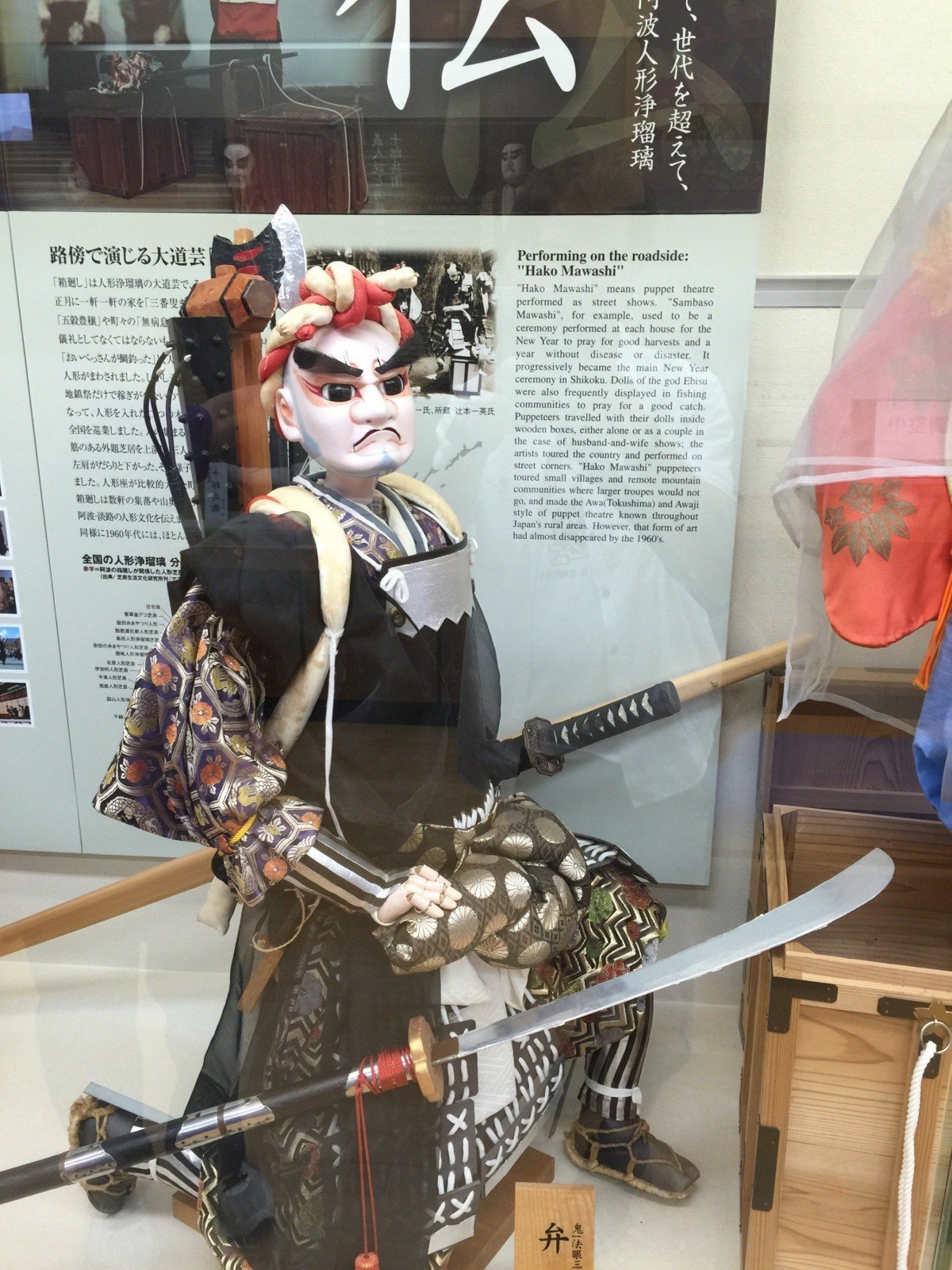

The Tourist Information office near the station has a timetable. The theater is 25 minutes from Tokushima Station stand 7, on the Kawauchi Circular bus. Closed over the New Year.Entry is 410 yen for adults, 300 yen for high school and university students, 200 yen for younger children. After the performance the puppeteers come down from the stage with the puppets for photo-ops with the audience and chatting. On weekdays the accompaniment is recorded. The performance itself is of several scenes from the tragedy Keisei Awa-no-Naruto, and the main character is Bando Jurobe himself.įor performances on weekends and holidays the chanter, who supplies voices for all the characters, and the shamisen player sit in a separate space to the right of the stage.

You can also watch a video about Awa Ningyo Joruri, though the narration is only in Japanese.

Most of the exhibits have information in English. There is also a museum with displays of puppets and related materials especially on the puppet heads which can be remarkably complex. The theater is in the grounds of a traditional house and garden that belonged to a rich indigo merchant by the name of Bando Jurobe.īefore watching the performance it is worth having a look at the garden, a traditional Crane & Turtle design. The Awa Jurobe Yashiki in Tokushima city offers a convenient and inexpensive way of seeing some traditional Japanese puppet theater. Each puppet has three operators Awa Jurobe Yashiki: The Tokushima Puppet Theater & Museum The puppets were also bigger here than in other parts of the country.Ī scene from a performance of Awa Puppet Theater. One of the best places to see puppet theater nowadays is in Tokushima on Shikoku, where the puppet shows were particularly popular in the countryside. Known mostly for his kabuki plays, many were actually written for puppets and later adapted for kabuki.ĭisplays in the puppet museum in Tokushima One of the large puppets on display at Awa Jurobe Yashikiīunraku was more popular in Osaka in the west of Japan ( Kansai) than in Edo ( Tokyo) and the east ( Kanto), which is why the National Bunraku Theater is in Osaka. When the two were brought together in early 17th century Osaka, bunraku was born.īunraku grew in popularity largely due to the influence of the famous playwright Chikamatsu Monzaemon, sometimes referred to as the "Shakespeare of Japan." Ningyo means "doll," and joruri is a kind of chanted storytelling accompanied by shamisen. Often called Bunraku, it features large puppets, and multiple on stage puppeteers for each puppet.Įntrance to the Awa Jurobe Yashiki Puppet Theater & Museum, Tokushima, Shikoku, Japan Bunraku Along with kabuki, it was a major form of popular theater entertainment during the Edo Period. Ningyo Joruri, a traditional form of Japanese puppet theater has been around for hundreds of years. Discovering Japanese Puppet Theater in Tokushima 阿波十郎兵衛屋敷


 0 kommentar(er)
0 kommentar(er)
